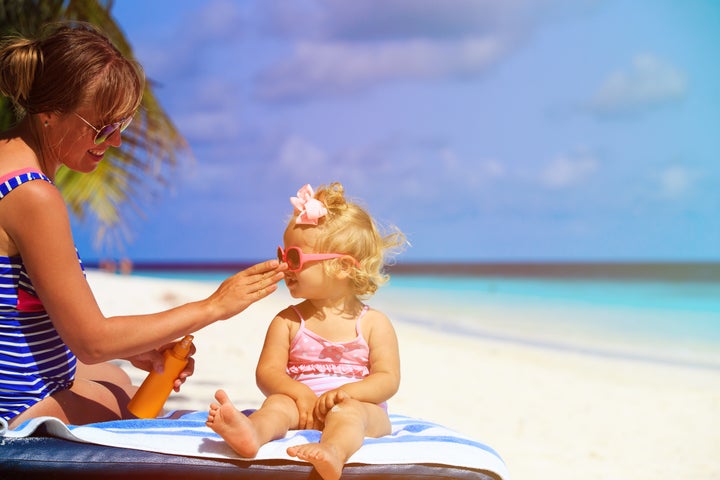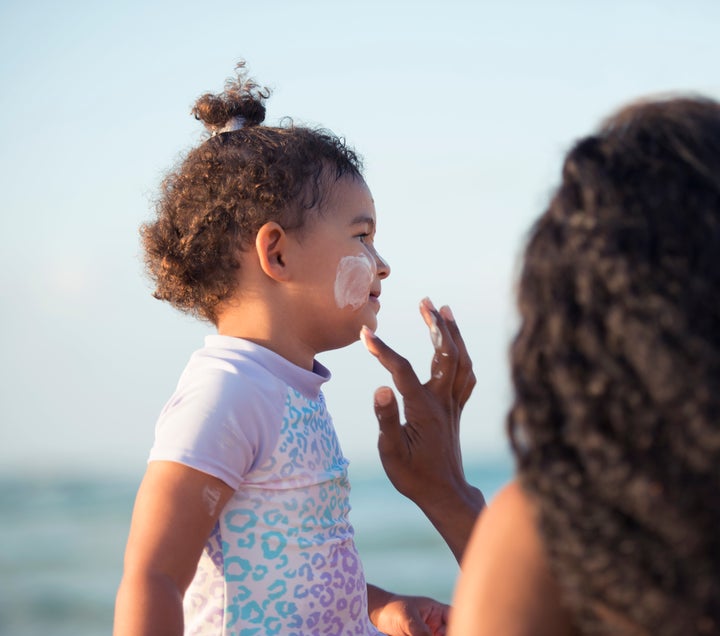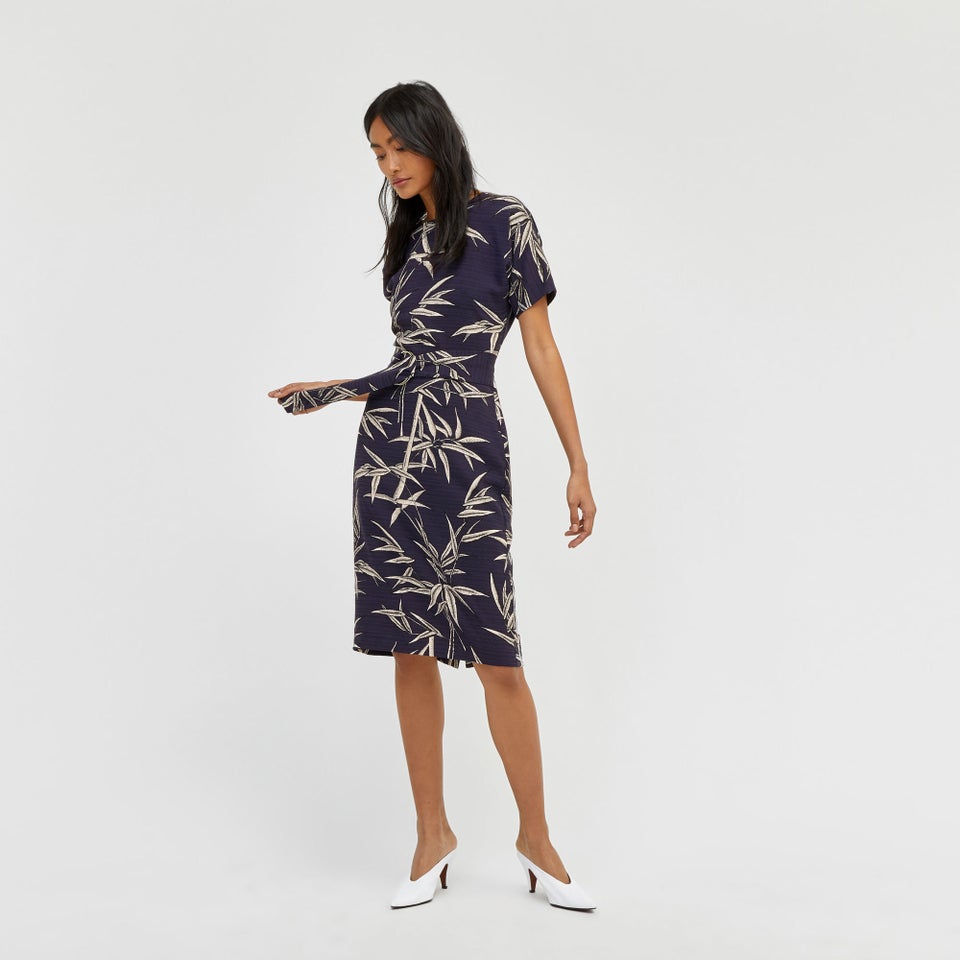Now the sun is making an appearance it’s likely you’ll be spending much more time outside with your kids and so the annual struggle to get them slathered in suncream begins.
We asked Cancer Research UK and the British Skin Foundation what parents need to know to make sure they are getting the best sun protection for their children and babies.
How to choose the right suncream for your child.
Cancer Research’s health expert, Sophia Lowes, says there are two things you should lookout for on the packaging:
1) SPF factor
SPF stands for sun protection factor and protects against UVB rays, which are responsible for sunburn and are linked to skin cancer. Dr Emma Wedgeworth, consultant dermatologist and British Skin Foundation spokesperson advises that “higher factors, for example SPF 30-50, should be chosen for children,” and says the absolute minimum SPF you should use on kids is 30.
For babies under six months old, Dr Wedgeworth says sun avoidance is generally advised. “Keep infants out of the direct sunlight at all times,” she says. If necessary you can use certain types of sunscreen on a baby under six months, but if you plan to use them regularly you should check out the ingredients. Suncreams fall into two categories: “Chemical sunscreens work by absorbing the sun’s rays so that UVB and UVA do not cause damage to the skin cells,” Dr Wedgeworth explains. “These products are not suitable for regular use on children under six months. Physical sunscreens are mainly zinc oxide or titanium dioxide. They may be used in infants if necessary, but in general behavioural changes and covering the skin are the best options.”
For babies aged six to 12 months, a chemical sunscreen may be used, although protective clothing should also be worn.
The difference between physical and chemical suncreams.
Chemical suncreams are those that contain chemicals. Physical sunscreens use natural compounds to block the sun’s rays.
You can look on the ingredients of a bottle to see if it is a physical (also called ‘inorganic’) or chemical (also called ‘organic’) suncream:
Physical: Will includes zinc oxide or titanium dioxide.
Chemical: Includes one or more of the following chemicals: oxybenzone, avobenzone, octisalate, octocrylene, homosalate and octinoxate.

2) UVA star rating
UVA stands for ultraviolet-A, this is another type of sun ray that has been inked to cancer. Suncreams carry a star rating to show how much UVA protection they offer and Lowes says you want one with four or five stars for the UVA rating. “The SPF and the UVA together both protect the skin in different ways, so you need high ratings of both of them together to get the best protection,” she adds.
Do cheap suncreams work?
“What isn’t important about sunscreen is the price tag,” says Lowes. As long as the SPF and the UVA star rating are of a good standard, that’s what matters.
Should I buy suncream marketed at kids?
Dr Wedgeworth says while it is safe for children to use adult sunscreen, specific sunscreen marketed for children generally will have a high SPF and are fragrance free to reduce possible allergens, so it’s worth going for them.
What if my child has sensitive skin?
Dr Wedgeworth says to look for hypoallergenic sunscreens, or those with fewer ingredients, thus less possible allergens. “Also, physical sunscreens can sometimes be more suitable for sensitive skin than chemical,” she says.
If my child has fairer skin are they more likely to burn?
No skin type is immune to damage from the sun, says Dr Wedgeworth, but she says it is important to realise that the risk of burning and of developing skin cancer is strongly correlated with skin type. Children ‘very fair skin’ or ‘fair skin’ - have the highest risks of skin malignancies, so extreme caution should be taken in children with fairer skin.
How much suncream should I apply?
Lowes says people usually only a quarter of the amount of suncream that they should. Follow directions on the bottle that state how much should be applied.
Another important thing to note is that parents often miss parts of the skin. So do take time to ensure all areas of your child’s skin are covered.
How do I get my child to sit still long enough for me to apply suncream?
For some children, compliance can start to become a problem, says Dr Wedgeworth, because they dislike the feel and the inconvenience of regular sunscreen application. “Distraction techniques can be useful, as well as different modes of application such as sticks or sprays for the face and nose,” she advises. “The type of technique would completely depend on the child. Perhaps apply sunscreen in front of the television or whilst your child is playing with a toy so that they are entertained.”

How often should I reapply my child’s suncream?
Lowes says this is a tricky question to answer, as it depends what the child is doing and you should consider if they are in direct sunlight, swimming, playing sport, or the cream is rubbing off on clothes. “It should definitely be reapplied more than once a day,” she says. But, as a rule of thumb, if your child is going to be in direct sunlight for a long period of time, Dr Wedgeworth says you should first apply sunscreen 15-20 minutes before going out and reapply every two to three hours or immediately after swimming or sweating.
Lowes advises it is important to keep in mind that sunscreen shouldn’t be the first line of defence against sun damage. “What’s also important is shade and clothing, so if you’re worried about when to reapply, stick your kids in the shade for a bit,” she says.
What else can I do to protect my child from the sun?
“Suncream should always be used in conjunction with other measures such as protective clothing, wide brimmed or legionnaire’s hats, good quality sunglasses and seeking shade between 11am–3pm, when UVB is at its highest intensity,” advises Dr Wedgeworth.
How do I know if my child is catching the sun?
Sunburn isn’t always oyster pink or peeling, even if you notice your child’s skin is slightly pink, it could still be sunburn and it may be best to keep them inside or cover them up.
